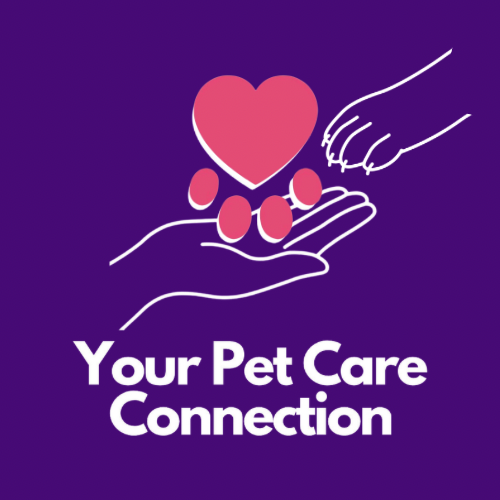Prepping for a Lifelong Commitment
Welcoming a new furry friend into your home is a joyous occasion, especially during the holiday season when the spirit of giving is in the air. However, the decision to bring a dog into your family is a significant, long-term commitment that requires careful consideration and preparation. As you plan for the arrival of your four-legged companion, it’s crucial to prioritize responsible pet ownership. In this month’s blog, we’ll explore the essential aspects of preparing for a lifelong commitment to your new dog, including the valuable role that pet services, including professional pet sitting and dog walking, can play in ensuring the well-being of your new family member.
Is A New Pet Right For You?
We all love puppies, and Christmas is practically the puppy version of baby fever. But, like most impulse purchases, your feelings may change later on if you don’t plan properly first. Before deciding whether to bring a new family member home, here are some questions to ask yourself:
- Can you offer the right home environment for a new pet?
- Do you have a work schedule that can accommodate a puppy’s needs, or a professional dog walking service for while you’re away, to keep potty training on track?
- Do you have a fenced-in yard, or can you commit to daily walks with your new pet?
- Do you have children, or other pets, within your household that might not be well suited to your new family member?
- Are you prepared to keep the pet, even if you have life changes or need to move?
- Do you understand the financial commitment? The average annual expense of keeping a dog, according to money.com, is roughly $500-3,500. And that’s sans any surprise veterinary bills.
- Do you know who you’ll be using for your pet’s essential care services? Prep ahead of time, by selecting quality care providers for your new puppy, to keep your pet healthy and on track with potty training and more.
- Veterinarian
- Dog Trainer
- Groomer
- Pet sitter & Dog walker
- Do you know what the best breed is for your household? Each breed, and each pet, has its own personality set. Don’t end up bringing home a jack russel when you need a wheaten. Be sure you know the difference in breed tendencies and temperaments, so you know what’s best for you. Looking HERE, and search the breed you’re considering, to find out a bit more.
Preparation Before Arrival
Have you decided that a new family member is right for you? Congratulations! Next, let’s get you set up to successfully bring your new pet home. See below for an essential checklist, or follow the links to grab a FREE supplies checklist, courtesy of YPCC Pet Care.
- Pet-Proof Your Home
- Purchase Your Pet’s Essential Supplies
- Schedule Your Pet’s First Visit To The Veterinarian
- Coordinate With Your Dog Trainer For Socialization & Training
- Schedule A Meet & Greet Visit With Your Pet Sitter And Your New Pet
The First Days at Home
The big day is here, It’s finally time to bring your new pet home! Your breeder, or pet rescue group, will often walk you through the first stages of introducing your pet to its new forever home. For any new pet, this can be quite an adjustment process. Be sure to take this process slowly, and deliberately, so as to form a strong bond with your pet for years to come.
Change can be stressful. Make your pet’s first week home as quiet, and as comfortable as possible. Check out these additional quick tips, below, on how to help your new pet adjust properly.
Behavioral Basics, To Ensure A Smooth Transition:
- Introductions
- Limit initial interactions with new people at first. Don’t get your pet, and then go out puppy shopping with it. This will quickly overwhelm your new pet. Factors such as stress can weaken your pet’s immune system, and young pets can quickly pick up parvovirus from being around others.
- When introducing your new pet to your existing ones, a staged or gradual introduction is best. Most introductions should not happen until three days to a week after bringing them home. This is so that your new pet has time to decompress, making the transition a positive experience rather than a traumatizing one.
- For dogs, introductions are best done on natural territory.
- For cats, this may be a several week long process. Rotate who has access to which rooms for about a week, to help gradually introduce each of them to each other’s scent prior to meeting.
- Bonding
- Spend quality time with your new pet to build trust and bond. You can also sleep with a few of your pet’s soft toys under your shirt, and then place the toy in their living area. This will give your pet a comfort item, and a way to grow accustomed to your scent, while you’re away.
- Establish A Routine.
- Set a regular feeding schedule. Not only is this important for overall health, this helps keep your pet on track with their potty training too!
- Establish a bathroom routine, with a designated potty area outside.
- Begin basic training commands, with help from your dog trainer.
Establishing Lasting Relationships
After your pet has gotten settled in, you can then start introducing them to their essential services providers. Connecting your pet with their caregivers early on helps create long-lasting relationships, and establish positive associations, early on. Set your new pet up for a lifetime of successful care visits, by lining up these essential services in your pet’s first month with you:
- Veterinary
- Schedule and attend your pet’s first check-up. Try to find a fear-free certified veterinarian, to ensure a positive experience, and build the basis for positive vet visits for years to come.
- Schedule your pet’s follow-up visits for vaccinations and preventive care.
- Discuss spaying/neutering options
- Discuss teething, and preventive dental care for future
- Grooming
- If you have a long coated dog, you’ll need to hire a groomer on a regular basis to keep their skin and coat healthy. Establish this service early on, to help teach your pet how to properly behave for the groomer, and desensitize them to things like the blow dryer.
- If you have a short coated dog, you’ll still need to ensure that they receive regular brushing, bathing, and nail trims. YPCC pet care offers these essential grooming services, to Moore County residents, in the comfort of home.
- Training and Socialization
- Leash training
- Basic Commands: Sit, stay, and recall
- Puppy socialization classes
- Exposure to various environments and people
- Professional Pet Sitting & Walking Services
- Schedule an introductory visit with a trusted pet sitter.
- Schedule regular daytime visits to assist you with maintaining your pet’s routine. YPCC is a professional pet care service that offers a variety of services for regular potty breaks, exercise, enrichment, mental stimulation, companionship for your pet while you’re away.
- Even if you’ll only need vacation pet care services, still go ahead and book your meet & greet visit. Then, make a point of scheduling regular enrichment visits. YPCC encourages booking 15-30 minute care visits, about 1-4 times a month, to get your pet accustomed to having someone by the house, and to maintain a lasting relationship with their care provider.
Building A Lifelong Bond
Lastly, and most importantly, focus on building a relationship with your pet through quality time and enrichment. Your quality time with your pet can take place in many different forms, from taking a walk with them to engaging with interactive toys and games.
Remember, every puppy is unique, so adapt these guidelines to suit your new furry friend’s individual needs and personality. Regularly assess your puppy’s needs, and adjust their routine and training as necessary.
Get our FREE new puppy checklist here!







